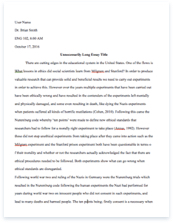”And the Waters Turned to Blood” by Rodney Barker

- Pages: 4
- Word count: 964
- Category: Books
A limited time offer! Get a custom sample essay written according to your requirements urgent 3h delivery guaranteed
Order Now
Rodney Barker, in his book And the Waters Turned to Blood in 1997, describes the phenomenon that took place because of the existence and discovery of the poisonous dinoflagellates, Pfiesteria piscicida. The discovery started when these were introduced into the tanks of tilapia culture through the collected water from the close-by estuary at the North Carolina State University Veterinary School in 1988 (Hinson, 2002). Because of this incident, many tilapia were killed. Along with that, it was also found out that a major fish kill incidents also happened in mid-Atlantic and southeastern bay of United States.
The title of the book signifies the transformation of the water, like the sea, to become the primary predator and cause of some big tragedy in the region. The thing that is pointed here are the causes and effects made by the organisms called dinoflagellates in the ecosystem and to the people as well.
In this book, the primary cause of the turning blood of water is the emergence of dinoflagellates, which was discovered by Dr. Lois Pfiester. Dinoflagellates, as fish killers, are unicellular organisms which are usually located at the lower level of the food chain. Due to the difference in lifestyle of other dinos, most of their varieties or species carry and produce the powerful toxins, which are considered as their defense mechanism against their predators. Perhaps, one of these is the red tide.
Due to this incident, some major investigations both in the events and biology were done to solve and explain this problem. One name floated due to its credibility and expertise on dinoflagellates and dedication in solving the Maryland’s case, her name is Dr. JoAnn Burkholder, a professor from the North Carolina State University (Simon & Schuster). In 1988, Dr. Burkholder was asked for a help by Mr. Noga regarding the events of fish kills due to the infestation of single-celled dinoflagellates on the tank that the brought when Mr. Noga’s group went to the estuary Pamlico Sound on the coast of North Carolina.
There are some points, lessons, and highlights that the book brings to its readers:
First, the book is educational since it tells the nature and danger of these dinoflagellates. These species of Pfiesteria piscicida usually stay and live underneath the dormant river floor. It portray the characteristics of both plants and animals. It just generated toxins when it hibernate because it burst out and die. Then it results to the increase bloom of red tides phenomenon in the coastal areas. Among the effects of its exotoxins to human health include nausea, sores, memory loss, and mood swings (Simon & Schuster).
Secondly, the book highlighted the personality of Dr. Burkholder as a woman of strength, dedication, determination, and perseverance for the sake of profession and care for the humanity that made me admire her persona and role in the book. In her triumph in getting along with people, her scientific integrity was seen in her rigidity and being strong towards the opposite response on his work due to her lack of background and further study on dinoflagellates.
The book taught the reader of Dr. Burkholder’s image as a symbol of woman who are willing to fight and survive towards her ambition and profession, despite of the antagonists, problems that arises, and the difficulties in the laboratories. In addition, Mr. Burkholder did some complaints about people, like Mr. Noga, as one of her antagonists, who use her research study to spread bad impression and scare the people. Actually, as reported in the Maryland newspaper, she (Dr. Burkholder) and other investigators were allegedly sick due to the toxins of dinoflagellates. In this regard, the people became disoriented and lose their personalities regarding on their fear that soonly they will be hit by the poisons of dinoflagellates. This is just a literary technique of the author to determine and test how far would Dr. Burkholder go in her goal of solving the problem on dinoflagellates.
Thirdly, the book tells much of a good story as it taught the readers about the danger and mystery of the natural environment (Mann, 1997). Human are usually not in-control of the situation pertaining to the environment’s mystery. The book goes after the usual scheme of story telling—narration. In this regard, the collage of various details of the story could be realized, like the grant proposals, environmental issues, unidentifiable death rate cases, health issues, and connivance, are clearly depicted and highlighted in the progress of the story.
Lastly, as the book tackles the events happened about a year ago, the author made an impressive ending of the story—with an event of arrival of Hurricane Fran harms the region, together with the biohazard laboratory of Dr. Burkholder. The book also taught the readers about the primary role of having a good information, plan, and prediction on how to control the situation scientifically because in reality, the water and fish managers are more interested and motivated to help alleviate and solve the problem as long as there is sufficient scientifically proven information gathered and collected in strengthening the strategies necessary for the solution of the problem. It has to be considered that there will be good cooperation among the involved authorities, like the ecologists, biologists, policy makers, and environmentalists, in order to uphold the standard and best foe the welfare of the humanity and environment.
References:
Hinson, D. (2002). A Review: And the Waters Turned to Blood. Retrieved May 9, 2007, from http://www.agls.uidaho.edu/etox/resources/book_reviews/PFIEST.PDF
Mann, C. C. (1997, April 27, 1997). Wet and Nasty. The New York Times.
Simon, & Schuster. And the Waters Turned to Blood. Retrieved May 9, 2007, from http://www.case.edu/artsci/math/alexander/reviews/br16.html










